Some infections before and during the pregnancy can harm the mother and the developing fetus. They can cause serious illness, birth defects, and lifelong disabilities. There are three classes of gynecological infections: toxic shock syndrome, sexually transmitted infections, and pelvic inflammatory disease.
- Toxic shock syndrome (TSS): TSS is a rare and potentially fatal disorder. It is caused by strains of Staphylococcus aureus that produce toxins that can cause shock, coagulation defects, and tissue damage if they enter the bloodstream. TSS is associated with the trapping of bacteria within the reproductive tract for a prolonged time.
- Sexually transmitted infections (STI): STIs are infections that can be spread by sexual contact, although several of them also have other modes of transmission. Human papillomavirus is the most common viral STI, with more than 100 variations.
- Pelvic inflammatory disease (PID): PID is an infection of the upper reproductive tract. Asymptomatic STIs are a common cause of PID. The cervix, uterine cavity, fallopian tubes, and pelvic cavity are often involved. Infertility may be the result.
Nurses play a key role in educating women concerning vaginal health and the prevention of sexually transmitted infections. Identifying high-risk behaviors and providing non-judgemental, sensitive counseling and education should be part of every prenatal consultation.
Nursing Care Plans and Management
The nursing care plan for clients diagnosed with perinatal infection involves screening/identifying for prenatal infection, providing information about protocol-based care, and promoting a client/fetal well-being.
Nursing Problem Priorities
The following are the nursing priorities for patients with prenatal infection:
- Infection identification and diagnosis. Promptly identifying and diagnosing prenatal infections through appropriate testing and evaluation to guide timely intervention and management.
- Maternal health assessment. Evaluating the overall health of the mother, including monitoring vital signs and assessing for any signs or symptoms of infection, to ensure her well-being.
- Fetal monitoring. Monitoring the well-being of the fetus through regular ultrasounds, non-stress tests, or other appropriate methods to assess the impact of the infection on fetal health.
- Antibiotic therapy. Administering appropriate antibiotics to treat the specific prenatal infection, considering factors such as the type of infection, drug safety during pregnancy, and the patient’s individual circumstances.
- Prevention of transmission. Implementing strategies to prevent transmission of the infection from mother to fetus, such as counseling on hygiene practices, safe sexual practices, and avoiding exposure to known sources of infection.
- Maternal education and support. Providing education to the mother about the infection, its potential risks, and the importance of adherence to prescribed treatments, as well as addressing any concerns or questions she may have.
- Prevention of complications. Implementing measures to prevent potential complications associated with prenatal infections, such as preterm labor, fetal growth restriction, or birth defects, through close monitoring and appropriate interventions.
- Postpartum care and follow-up. Providing appropriate postpartum care to monitor for any lingering effects of the infection, ensure the well-being of both the mother and the baby and address any necessary follow-up treatments or evaluations.
Nursing Assessment
Assess for the following subjective and objective data:
- See nursing assessment cues under Nursing Interventions and Actions.
Nursing Diagnosis
Following a thorough assessment, a nursing diagnosis is formulated to specifically address the challenges associated with prenatal infection based on the nurse’s clinical judgment and understanding of the patient’s unique health condition. While nursing diagnoses serve as a framework for organizing care, their usefulness may vary in different clinical situations. In real-life clinical settings, it is important to note that the use of specific nursing diagnostic labels may not be as prominent or commonly utilized as other components of the care plan. It is ultimately the nurse’s clinical expertise and judgment that shape the care plan to meet the unique needs of each patient, prioritizing their health concerns and priorities.
Nursing Goals
Goals and expected outcomes may include:
- The client will verbalize understanding of individual causative/risk factors.
- The client will review techniques and lifestyle changes to reduce the risk of infection.
- The client will initiate behaviors to limit the spread of infection and reduce the risk of complications.
- The client will achieve timely healing, free of complications.
- The client will identify and use individually appropriate comfort measures.
- The client will demonstrate the use of relaxation skills and diversional activities.
- The client will report discomfort is relieved or controlled.
- The client will verbalize understanding of the importance of providing necessary information for data collection.
- The client will identify appropriate preventive practices.
- The client will adopt behaviors/lifestyle changes as indicated.
- The client will follow through with an individual treatment regimen.
- The client will list signs and symptoms that necessitate evaluation/intervention.
- The infant will exhibit organized behaviors that allow the achievement of optimal potential for growth and development.
- The parents will identify cues reflecting the infant’s stress threshold and current status.
- The parents will develop or modify responses to promote infant adaptation and development.
- The client will acknowledge the factors that lead to the possibility of feelings of low self-esteem.
- The client will verbalize view of self as a worthwhile, important person who functions well both interpersonally and occupationally.
- The client will demonstrate self-confidence by setting realistic goals and actively participating in life situations.
Nursing Interventions and Actions
Therapeutic interventions and nursing actions for patients with prenatal infection may include:
1. Preventing Infections
Bacterial infections are the single most common medical complication encountered by healthcare professionals. Some infections, such as puerperal endometritis and lower urinary tract infection, are of principal concern to the mother and pose little or no risk to the fetus or neonate. Others, such as listeriosis and group B streptococcal (GBS) infection, are of greatest concern to the fetus. Still others- such as pyelonephritis, chorioamnionitis, and syphilis- may cause serious morbidity, even life-threatening complications, for both the mother and the baby (Galan et al., 2020).
Obtain information regarding the client’s past and present sexual partners and exposure to sexually transmitted infections (STIs).
Multiple sexual partners or intercourse with bisexual men increases the risk of exposure to STIs and HIV/AIDS. STIs are diseases that are spread through sexual contact with an infected partner. The client should also include any sexual contact with persons who are intravenous drug users.
Obtain information about the client’s cultural background for risk factors.
In Africa, the male-to-female ratio of HIV is 1:1 owing to cultural, sexual practices, poor hygiene, and inadequate health care, while recent arrivals from Asia, South America, and the Caribbean islands have increased the risk of exposure to the Hepatitis B virus.
Review lifestyle and profession for the presence of associated risk factors.
Drug abusers and healthcare professionals are at risk for exposure to HIV/AIDS and HBV through contact with contaminated needles, body fluids, and blood products; tuberculosis through airborne droplets. Adolescents now account for almost half of the new cases of STIs each year. Pay particular attention to adolescents who do not have a strong family support system because it may be difficult for these youth to receive correct information about preventing STIs.
Assess for any specific signs and symptoms, if present, and notify the healthcare provider. These may include visible lesions/warts, urinary frequency, dysuria, cloudy, foul-smelling urine, and changes in color, consistency, and amount of vaginal discharge.
Identifiable signs of infection assist in determining the mode of treatment. Some organisms have a predilection for the fetoplacental unit and the neonate, although the client may be asymptomatic; i.e., Mycoplasma and Ureaplasma organisms affect many pregnant women and have been cultured in aborted fetuses, even though the mothers have been free of symptoms. Visible lesions and warts may indicate herpes simplex virus type II (HSV II)/condyloma, which can be transmitted to the newborn at the time of delivery if a lesion is present at term or if viral shedding is occurring. Urinary tract infection symptoms may be associated with Escherichia coli or GBS, or the client may have asymptomatic bacteriuria. Abnormal characteristics of vaginal discharges (discoloration, foul-smelling odor, excessive amount) may indicate an STI.
Determine if the infection is either primary or recurrent.
Both herpes viruses (CMV and herpes simplex virus II [HSV-II]) recur in times of stress. Yet only primary CMV is problematic to the fetus, and only 50% of the fetuses exposed are affected. Although recurrent HSV-II is associated with reduced viral shedding time, the newborn, if exposed to the virus at delivery, can be affected with either visible lesions or a disseminated type of disease. When this occurs, a severe systemic infection that is often fatal can result.
Determine the status of maternal membranes. If they are ruptured, monitor blood cell count and fetal heart rate; or if the vaginal discharge has an odor.
Infectious organisms transmitted via the ascending route, including Chlamydia, mycoplasmas, and Ureaplasma urealyticum, develop bacteremia and pneumonia or possibly meningitis. Chlamydial infections are associated with premature rupture of membranes, preterm labor, and endometritis in the postpartum period. An infant born while a chlamydial infection is present can develop conjunctivitis or pneumonia after birth.
Perform a comprehensive STI and HIV screening.
STI screening is recommended by the CDC because STIs are biological markers of risk, particularly for HIV acquisition and transmission among certain men who have sexual activities with other men. STI screening is an essential and underused component of an STI and HIV risk assessment. Persons seeking treatment or evaluation for a particular STI should be screened for HIV and other STIs as indicated by community prevalence and individual risk factors. The client must be informed about all the tests for STIs they are receiving and notified about tests for common STIs (Centers for Disease Control and Prevention, 2021).
Screen the pregnant woman for HIV during the first prenatal visit and during the third trimester.
All pregnant women should be tested for HIV during the first prenatal visit. A second test during the third trimester, preferably at <36 weeks gestation, should be considered and is recommended for women who are at high risk for acquiring HIV infection, women who receive health care jurisdictions with high rates of HIV, and women examined in clinical settings in which HIV incidence is ≥1 per 1,000 women screened per year (Centers for Disease Control and Prevention, 2021).
Educate the client regarding the proper use of tampons, diaphragms, and cervical caps.
To prevent toxic shock syndrome, the client should be taught to wash her hands well when using tampons or a diaphragm. The tampons should be changed every four hours and not used during sleep, which usually lasts longer than four hours. The diaphragm should not be used during menstruation or eight weeks after childbirth.
Provide information on how to prevent STIs.
Abstinence or condom use provides the best protection against STIs. Additional measures include voiding immediately and washing the genitals well with soap and water after coitus, as well as choosing sexual partners who are at low risk for infection. Educating adolescents about safer sex practices, including the need for condom use and the importance of health screening for these disorders, is an important nursing responsibility.
Inform the client about the importance of vaccines against STIs.
Approach the subject of immunization with the client with sensitivity because some clients, especially teenagers with their parents, are not ready to admit they might be or soon will become sexually active and need this protection. Immunizing adolescents against human papillomavirus (HPV) infection should reduce not only the incidence of HPV infections in the future but also the rate of cervical and penile cancer as well. The hepatitis B vaccine can prevent the disease, and immunoglobulin can be administered if known exposure has occurred.
Instruct against the use of douching.
Douching results in changes in the vaginal flora and predisposes the client to develop pelvic inflammatory disease (PID), bacterial vaginosis, and ectopic pregnancies. However, many women practice regular douching, believing that it is cleansing. The nurse can play an important role in educating the client to prevent PID.
Educate the client on how to prevent acquiring toxoplasmosis.
Removing a cat from the home during pregnancy as a means of prevention is unnecessary as long as the cat is healthy. However, taking in a new cat, which could be infected, is unwise. Instruct the pregnant client to avoid undercooked meat and also not to change a cat litter box or garden in the soil in an area where cats may defecate to avoid exposure to the disease. Reinforce proper hand washing after handling uncooked meat.
Offer the client prevention counseling on STI or HIV.
Prevention counseling is most effective if provided in a nonjudgmental and empathetic manner appropriate to the client’s culture, language, sex and gender identity, sexual orientation, age, and developmental level. Prevention counseling for STIs and HIV should be offered to all sexually active adolescents and to all adults who have received an STI diagnosis, have had an STI during the previous year, or have had multiple sexual partners. One such approach, known as client-centered STI and HIV prevention counseling, involves tailoring a discussion of risk reduction to the person’s situation (Centers for Disease Control and Prevention, 2021).
Obtain appropriate specimens and monitor laboratory/ diagnostic studies as indicated.
Candidal infections are diagnosed by removing a sample of the discharge from the vaginal wall and placing it on a glass slide with drops of hydroxide solution added. Under a microscope, typical fungal hyphae indicate the presence of Candida organisms. Most STIs are diagnosed by microscopic examination of a sample of the vaginal discharge. Culture of lesion secretions or isolation of HSV antibodies diagnoses Herpes infection. Urine culture should be obtained from clients with vulvovaginitis to rule out gonorrhea.
Assist as necessary with sputum collection and chest x-rays for clients with respiratory symptoms.
This helps in identifying causative organisms in bacterial pneumonia and active tuberculosis. Screening of tuberculosis early in pregnancy is important because it is a chronic and debilitating disease that increases the risk of miscarriage. Additionally, the change in the shape of the maternal lung tissue as the growing uterus presses on the lungs may reactivate already healed lesions, thus worsening the disease.
Administer antibiotics and other medications as indicated to the client and her sexual partner.
Treatment or alleviation of symptoms for STIs may include antibiotics such as azithromycin, doxycycline, erythromycin, ceftriaxone, and benzathine penicillin G; antivirals such as acyclovir; and antifungals such as miconazole, clotrimazole, or fluconazole. Metronidazole or tinidazole is indicated for treating trichomonas and Gardnerella infections and bacterial vaginosis.
Prepare for/assist in transfer to the tertiary care center as indicated.
Availability of staff and equipment ensures optimal care of high-risk clients and fetuses/newborns. Treatment for toxic shock syndrome includes hospitalization for the administration of vasopressor drugs and fluid replacement.
Prepare to assist with procedures to remove lesions or warts.
Treatment for human papillomavirus includes cryotherapy, laser vaporization, electrodiathermy, and electrofulguration with a loop electrode excision procedure. Therapy for such lesions is aimed at dissolving the lesions and also ending any secondary infection present. With cryocautery, edema at the site is evident immediately; lesions become gangrenous, and sloughing occurs in seven days, with healing complete in four to six weeks with only slight depigmentation present.
Prepare for termination of pregnancy or labor induction, as indicated.
Pregnancy may be terminated for such conditions as toxoplasmosis occurring before 20 weeks of gestation or rubella in the first trimester. An infant born after contracting either cytomegalovirus or toxoplasmosis may be born with congenital anomalies from the virus invasion. Elective termination is mainly a surgical procedure. Therefore, nurses employed in healthcare agencies where induced abortions are rendered and be asked to assist as part of their duties.
2. Managing Acute Pain Relief
Genital herpes simplex virus (HSV) can cause painful perineal or vaginal lesions that are discovered during prenatal visits through conscientious history taking. Ulcers caused by HSV can make urination painful. Chlamydia and trichomoniasis may cause painful urination, lower abdominal pain, and pain during sexual intercourse for the client. These infections can cause extreme discomfort to the pregnant client and should be managed effectively.
Identify the source, location, and extent of discomfort; note signs and symptoms of an infectious process.
Vulvar or vaginal itching are typical symptoms of candidiasis and trichomoniasis. Clusters of painful vesicles on the vulva, perineum, and anal areas are indications of HSV infection. The client with HSV infection may present with flu-like symptoms with increased temperature. The pain is intense on contact with clothing or acidic urine.
Assess the client’s history thoroughly. Screen the client for other possible causes of pain or discomfort.
Generally, the client should have a thorough history and physical exam to rule out a broad differential diagnosis. Depending on the clinical presentation of the client and acuity, a client with a primary complaint concerning an STI should involve ruling out localized versus systemic infection.
Provide information about hygienic measures such as frequent bathing, use of cotton underwear, and application of cornstarch for the client with vaginal discharge associated with STDs (chlamydial infection or gonorrhea).
A warm bath three times a day may be helpful to reduce discomfort, although its moisture tends to prolong the active period of the lesions. Avoid using bubble baths, vaginal spray, and scented vaginal products. The client may apply cornstarch to decrease the itchiness and friction in the perineal area, but these treatments have little or no proven benefits and may increase irritation or facilitate yeast colonization. The client should avoid nylon and other synthetic fibers. Instead, use cotton underwear to avoid irritating the perineal area. (Janniger et al., 2005)
Provide information regarding the use of warm sitz baths, use of hair dryer on genital area, urinating through an empty toilet paper tube, and wearing loose-fitting jeans/pants and cotton underwear for clients with HSV-II.
These actions prevent discomfort associated with urine coming in contact with lesions and help keep the genital area dry and clean. Wearing loose clothing is advised for clients with HSV infection to reduce the pain of the genital lesions. A new study suggests using Acacia pod sitz bath and vaginal pessary as effective syndromic management of abnormal vaginal discharge and its associated symptoms (e.g., vulvar pruritus, backache, dysuria, and burning micturition. The Acacia pod extracts have anti-inflammatory, astringent, and antiseptic properties; Satish et al. also reported antibacterial and antifungal activities of the methanolic extracts of A. arabica pods (Saeedi et al., 2022).
Encourage increasing oral fluid intake and voiding in a warm sitz bath for the client with urinary tract infection (UTI).
These interventions help prevent stasis. The warmth relaxes the perineum and urinary meatus to facilitate voiding. The effect of a sitz bath is to enhance pelvic circulation, reduce the swelling of the tissues, and soothe the itchiness of sore vaginal tissues (Ahmed & Shameem, 2022). The pathophysiology underlying increased fluid intake to prevent UTI is based on the supposition that increased fluid intake results in a water diuresis with a diluting effect on bacteria contaminating the urinary tract. Subsequently, the increased voiding that occurs leads to the elimination of the bacteria from the urinary tract and a reduction in bacterial proliferation in the bladder (Fasugba et al., 2020).
Encourage them to increase fluid intake and place them in a semi-Fowler’s position during sleep for clients with respiratory infections, such as tuberculosis.
These interventions help liquefy secretions and facilitate respiratory functioning. An upright position allows the diaphragm to descend, thereby facilitating lung expansion. Chest physiotherapy may be allowed but can be difficult in late pregnancy. To continue this effectively, the client may need to plan more frequent and shorter sessions in modified positions during pregnancy.
Encourage rest for the client with tuberculosis or flu-like symptoms associated with listeriosis, rubella, or toxoplasmosis.
This reduces metabolic rate and facilitates the response of the individual immune system to infection. Herpes simplex virus may also cause systemic flulike illness; primary cytomegalovirus may manifest with fatigue and lymphadenopathy. Arthralgias may suggest rubella (Marino & Isaacs, 2021).
Administer medications as indicated, such as analgesics, antipyretics, antibiotics, and antifungals.
Analgesics relieve discomfort associated with backache, neuralgia, cervical lymphadenopathy, and perineal lesions. Antipyretics reduce fever and chills. Note: In clients with PROM, administration of analgesics that may have antipyretic properties (e.g., acetaminophen) should be avoided because it may mask temperature rise that would signal infection. Antibiotics eradicate organisms associated with UTI, bacterial pneumonia, STDs (gonorrhea, syphilis, chlamydial infection), and listeriosis; they also relieve flu-like symptoms associated with listeriosis. An experimental anti-AIDS drug, HPA-23, may help reduce discomforts associated with HSV-II, candidiasis, pneumonia, and Kaposi’s sarcoma.
Apply topical medications to the affected area.
Topical medication administration inhibits local replication resulting in a reduction of lesions and is typically used to treat oral HSV. For topical medication administration, the amount of bioavailable medication is very low secondary to poor percutaneous transport of active ingredients and is a less effective treatment of genital herpes caused by HSV II. Penciclovir is a topical treatment used to treat oral herpes and herpes labialis (Cole, 2020).
3. Initiating Patient Education and Health Teachings
STIs have been associated with a number of adverse pregnancy outcomes, including abortion, stillbirth, preterm delivery, low birth weight, postpartum sepsis, neonatal pneumonia, neonatal blindness, and congenital infection. Education is necessary for every woman as this will empower her economically and help her to make the right decisions. An educated woman is more likely to be able to negotiate for safe sex compared to an uneducated woman who does not know the dangers of unsafe sex (Baldeh & Isara, 2019).
Identify signs and symptoms of infection. Discuss the importance of prompt reporting to the healthcare provider.
Maternal infection may not be serious but can have serious implications for the fetus. Timely intervention may prevent complications and enhance the likelihood of a positive outcome. Additionally, accurate and timely reporting of STIs is integral to public health efforts in assessing morbidity trends, allocating limited resources, and assisting local health authorities with partner notification and treatment. Syphilis, gonorrhea, chlamydia, chancroid, and HIV are reportable diseases in every state (Centers for Disease Control and Prevention, 2021).
Identify risk factors associated with the client’s lifestyle.
Injection drug users are susceptible to percutaneous transmission of HSV-II, HBV, HIV/AIDS, and other STDs. Involvement with multiple sex partners also increases the risk of being infected. Most malarial infections in the United States occur among people who have traveled to areas where malaria is epidemic. Toxoplasmosis is spread most commonly through contact with uncooked meat and the handling of cat stool in soil or cat litter.
Assess the client’s level of knowledge and education.
With a low level of education, the awareness and knowledge of STIs can be very poor, and this shows that women need to be empowered. In the Gambia, even though female child education is increasing, there is still room for improvement, and parents should encourage their daughters to attain tertiary level education before getting married (Baldeh & Isara, 2019).
Assess the client’s perception or knowledge about STIs.
Several studies have found varying levels of knowledge of STIs among young people, who are the most vulnerable population to acquire infections (Oharume, 2020). In another study, most pregnant clients had poor knowledge of STIs. Although all the clients had heard of HIV/AIDS, most have not heard of any other STIs. Women also need to be educated on other STIs besides HIV/AIDS (Baldeh & Isara, 2019).
Assess the client’s risk perception about STIs.
Perceptions of risk and their actual correlations to behaviors need to be examined to facilitate optimal prevention strategies (Oharume, 2020). A study found that knowledge is associated with risk perception of STIs, which indicates that pregnant women may have applied their knowledge of STIs in assessing their risk. Clients who had good knowledge of STIs might have felt more at risk because they knew that they might get infected. This result was similar to the findings of previous studies, which reported a positive relationship between risk perception and knowledge of STIs or HIV (Oharume, 2020).
Obtain the client’s sexual history as recommended by the CDC.
As part of the clinical encounter, healthcare providers should routinely obtain sexual histories from their clients and address risk reduction as indicated. Effective interviewing and counseling skills, characterized by respect, compassion, and a non-judgmental attitude toward all clients, are essential to obtaining a thorough sexual history and delivering effective prevention messages (Centers for Disease Control and Prevention, 2021).
Ensure the privacy and confidentiality of the client.
Inform the client that STI and HIV reports are kept confidential. In most jurisdictions, such reports are protected by statute or regulation. Before conducting a follow-up of a client with a positive STI result, public health professionals should consult the client’s healthcare provider, if possible, to inform them of the purpose of the public health visit, verify the diagnosis, determine the treatments received, and ascertain the best approaches to client follow-up.
Provide information concerning identified risks associated with the client’s employment or profession. Stress the use of gloves and the importance of handwashing, especially when the client must handle blood products, saliva, or urine.
Dialysis workers and healthcare professionals who handle body fluids or blood products are at high risk for exposure to HSV-II, HIV, and HBV and need to use universal precautions. Use gloves, goggles, and other barriers when anticipating contact with blood or body fluids. Be careful when handling and disposing of sharp instruments during and after use, and these should be disposed of in a sharps container. Wash hands and other skin surfaces immediately after contact with blood or body fluids (Centers for Disease Control and Prevention, 2021).
Introduce technology-based interventions for sexuality education.
Technology-based interventions have been alternatively referred to as eHealth, mHealth, digital media, or new media interventions and typically utilize computers, smartphones, text messaging, and/or other web-based platforms. Compared with traditional interventions, new media approaches may allow for broad reach at relatively low costs, improved fidelity during intervention delivery, greater privacy and comfort for teens learning about sensitive topics, and increased capacity for individually tailoring prevention messages (Widman et al., 2018).
Discuss the mode of transmission of specific infections as appropriate.
This provides information to assist the client in making decisions about lifestyle/behavioral changes and reinforces the need for the partner to be treated. Educate the client that STIs are spread predominantly by sexual contact, including vaginal, anal, and oral sex. Some STIs can be spread through non-sexual means such as through blood or blood products and can also be transmitted from mother to child during pregnancy and childbirth (Baldeh & Isara, 2019).
Discuss the importance of avoiding contact with persons known to have infections, such as upper respiratory infections, tuberculosis, rubella (if not immune), and hepatitis. Stress the need for immunization for rubella after delivery as indicated.
Preventing exposure helps reduce the risk of acquiring infection. From 5%–15% of women of childbearing age are still susceptible to rubella, which is spread by droplets. Immunization after delivery results in immunity during subsequent pregnancies When exposure to or high risk of infection is present, vaccinations allowable during pregnancy include hepatitis A and B, inactivated influenza, and inactivated polio vaccine when immediate protection is required.
Provide information about the possible effects of infection on the client/fetus.
The infection affects approximately 15% of all pregnancies. For some infections, such as rubella, the outcome may be fairly predictable if the gestational age at which the fetus was exposed is known. For other maternal infections, such as those caused by Ureaplasma, Mycoplasma, or Listeria organisms, it is more difficult to predict the fetal/neonatal outcome, especially because the client may be asymptomatic. Most infections do not pose serious problems to the mother but can have varying effects on the fetus. Two-thirds of these exposed infants are infected in utero, with resultant effects on the liver and brain. Ascending tract infections have a greater chance of resulting in neonatal bacteremia and pneumonia.
Recommend wearing gloves while gardening, avoiding contact with cat litter boxes while pregnant, and cooking meats to appropriate internal temperatures.
This helps prevent toxoplasmosis, most commonly acquired in the United States through contact with cat feces. Some French and Japanese meat dishes are eaten raw or undercooked, thereby increasing the risk of acquiring toxoplasmosis. Instruct the pregnant woman to avoid undercooked meat and also not to change a cat litter box or garden in the soil in an area where cats may defecate to avoid exposure to the disease. Reinforce proper handwashing after handling uncooked meat.
Encourage the client to drink 6–8 glasses of fluid daily and to void regularly. Discuss results of urine test.
This may help prevent UTIs associated with stasis. Clients with asymptomatic bacteriuria (colony count greater than 100,000/ml) may be at risk for premature delivery, congenital defects in offspring, or anemia. High fluid intake has often been advocated by clinicians for UTI prevention with the aim of diluting the effect of contaminating bacteria and increasing elimination from the urinary tract. In addition, the frequent voiding that results from the high fluid intake is thought to prevent the proliferation of bacteria (Fasugba et al., 2020).
Review hygiene measures, including wiping vulva from front to back after urinating and washing hands frequently (including after animal contact.)
This helps prevent rectal E. coli contaminants from reaching the vagina and reduces contamination with other viruses or bacteria that may be transmitted by poor hygiene practices. Listeria infection is thought to be transmitted via animal contact. Hygiene and sexual activity play an important role in developing UTIs during pregnancy. UTI occurs in 5-10% of pregnant clients, and E. coli is one of the most common gram-negative organisms found in hospital and community-acquired bacteremia and one of the most important culprits in recurrent UTI (Dautt-Leyva et al., 2018).
Suggest client void following intercourse.
This may prevent or reduce the risk of UTI and transmission of STD, especially CMV and nongonococcal urethritis. There may be some protection in voiding within 15 minutes for women without any history of past UTIs (Harris, 2013).
Suggest alternative means of sexual gratification for clients with active HSV-II, HIV/AIDS, or HBV.
Fondling or masturbation for sexual gratification helps prevent the spread of infection to sexual partners. An international study observed that 33% of persons living with HIV/AIDS had stopped having sexual intercourse after the diagnosis of HIV infection. Sexual life is considered to be an important aspect of quality of life. As HIV infection is both a sexually transmitted disease and associated with social stigma, it is likely to specifically affect sexual life (Peyre et al., 2018).
Discuss necessary treatments that may have serious fetal implications, such as sulfadiazine and pyrimethamine (used to treat toxoplasmosis) or oral sulfonamides (used to treat UTI during the latter weeks of gestation).
These medications have known teratogenic effects on newborns. When toxoplasmosis is present, the fetus can be damaged by either the disease or the treatment. Neonatal hyperbilirubinemia and kernicterus may occur with the use of oral sulfonamides. To help ensure the safety of drugs during pregnancy, the US FDA rates drugs according to five categories in relation to pregnancy. Always look for a drug’s listed category before administering it to a pregnant woman to be certain it will be safe to administer.
Discuss possible effects of infection on type and timing of delivery.
Operative delivery may be indicated in the case of certain infections, such as HSV-II, and if the client has active herpes with intact membranes or if membranes are ruptured for more than four to six hours. If the client or fetus has developed an ascending tract infection following PROM, the fetus may need to be delivered before term to prevent maternal and fetal sepsis.
Discuss implications of PROM for client and fetus/neonate.
Membrane rupture more than 18 hours before delivery increases the risk of ascending tract infection, with resultant chorioamnionitis and maternal/neonatal sepsis. Common causative organisms in ascending tract infections include GBS, Chlamydiae, and Haemophilus influenza. Treatment is based on weighing the risks of early delivery of the fetus against the risk of infection in the mother and sepsis in the newborn. Vaginal or cervical infection may also cause prematurely ruptured membranes.
Review available options in cases of known teratogenic effects.
The fetus is more susceptible to the effects of rubella early in gestation. HBV poses more risks for the fetus in the third trimester. Teratogenic effects of toxoplasmosis include growth retardation, CNS calcification, microcephaly, hydrocephaly, and chorioretinitis. In cases of rubella infection or toxoplasmosis, the client or couple may elect to terminate the pregnancy, depending on the stage of gestation in which exposure occurs.
Discuss teratogenic infections and the importance of early detection as appropriate.
Teratogenic maternal infections involve viral, bacterial, or protozoan organisms, which cross the placenta from the mother to the fetus. Most infections that may detract from a healthy pregnancy outcome cause relatively mild, flu-like symptoms in the woman but can have much more serious effects on a fetus or newborn. When newborns are tested to see if antibodies against the common infectious teratogenic diseases are present, the test is described collectively under the umbrella term TORCH, an acronym for toxoplasmosis, rubella, cytomegalovirus, and herpes simplex virus. Preventing and predicting fetal injury from an infection is complicated because when the disease is subclinical, it is difficult to analyze any effect on the fetus.
Administer supplemental pyridoxine (vitamin B6) and calcium supplements as indicated.
This helps prevent peripheral neuropathy when INH is used to treat active tuberculosis. A client who had tuberculosis earlier in life must be especially careful to maintain an adequate calcium level during pregnancy to ensure the calcium tuberculosis pockets in her lungs are not broken down and the disease is not reactivated.
Provide information specific to infection regarding possible long-term effects and incubation period.
Long-term follow-up studies have determined that 8-10% of infants with congenital CMV infection, regardless of the presence or absence of symptoms at birth, will exhibit neurodevelopmental abnormalities (Britt, 2018). Between 25% and 70% of newborns who survive generalized herpes virus infections have permanent central nervous system sequelae (Pinninti & Kimberlin, 2014).
Discuss newborn care and the need for follow-up in infants born to mothers in active or carrier state of HBV.
Bathing the newborn immediately after delivery and administering HBIG and the hepatitis B vaccine will prevent the newborn from contracting the virus. Follow-up immunizations of the newborn with hepatitis B vaccine at one and six months are then necessary. Treatment for acute hepatitis B is supportive, as no medication is available for this stage. About 10% of children will develop chronic hepatitis B.
Identify self-help groups and sources of community support. Refer to an STI counselor.
This may help clients in gathering information and resolving issues. Behavioral counseling in STD prevention programs usually follows other interventions that uncovered an infection or exposure risk. This context differs from behavioral counseling in many primary care settings in that virtually all persons seen by an STD program have high individual-level risk. Tailoring and personalized counseling approaches appeared a necessary condition but most effective if matched with practical skills around condom use (Brookmeyer et al., 2016).
Assess for the presence of maternal infections that can cause long-term fetal complications.
Increased incidence of schizophrenia has been associated with other viral infections such as measles, rubella, varicella-zoster, polio, and herpes simplex virus type 2; with bacterial infections such as pneumonia and other respiratory infections, pyelonephritis, and diverse bacterial infections during pregnancy; with maternal infection with the toxoplasmosis parasite and with maternal genital/reproductive infections arising from various organisms (Boksa, 2010).
Determine the client’s gestational age during the occurrence of maternal infection.
With respect to the timing of the infection, numerous studies have identified the second trimester of pregnancy as the critical period for exposure to influenza and other viral infections, leading to increased schizophrenia. The most pronounced association of rubella infection with schizophrenia spectrum disorders was found, however, with first-trimester exposure. It appears that animal modeling of both viral and bacterial infection during the equivalent of the first and second trimesters of pregnancy may be relevant to the pathophysiology of schizophrenia (Boksa, 2010).
Assess the fetus/infant for the effects of maternal infection.
An infant born while a chlamydial infection is present can develop conjunctivitis or pneumonia after birth. If primary or secondary active lesions in the vagina or on the vulva are present at birth, a herpes infection can be transmitted to the newborn at birth. When this occurs, a severe systemic infection that is often fatal can result. If a gonorrheal infection is present at the time of birth, it can cause a severe eye infection, leading to blindness in the newborn (ophthalmia neonatorum). An infant who contracts syphilis during birth will develop a typical copper-colored rash most prominent over the face, soles of the feet, and palms of the hand. The infant may show severe rhinitis.
Educate the client and her partner about the risk of transmission and the risk of damage to the fetus.
When infection is suspected in a pregnant woman, it is essential to engage the client in decision-making. Many clients want their partner or another support person to be present during key discussions. The client must be provided with basic information on the risk of virus transmission to the fetus and the risk of damage if the fetus is infected. If fetal infection is proven, the client is informed of subsequent steps that will be acceptable for them (Pass & Arav-Boger, 2018).
Inform the client about diagnostic procedures available to evaluate the fetus.
A positive PCR or virus culture result from the amniotic fluid indicates the presence of fetal infection. A negative result is reassuring but may not rule out fetal infection. Cordocentesis has been used to quantitate CMV in fetal blood and to measure fetal platelet count and antibody response to infection (Pass & Arav-Boger, 2018).
Include the parents during the developmental care of the newborn.
Developmental care is designed to meet the specific needs of each infant and can lead to increased weight gain and decreased crying and apnea spells in preterm infants. Make the parents feel welcome in the neonatal intensive care environment through words and actions. Provide room around incubators or warmers for rocking chairs so parents can hold their baby comfortably. Encourage parent participation in feeding or supplying nonnutritive sucking experiences. Keep the parents’ informed about the newborn’s progress and the rationale for therapies.
Provide a safe and quiet environment for the newborn.
The environment of an intensive care unit is different from what infants would have experienced if they had remained in utero until term. Nursing care should be geared toward making the environment of infants as atraumatic as possible while helping them adjust to new experiences within their limited ability.
Reduce environmental stimuli for an environment conducive to healthy development.
Activities such as dimming the lights or covering an incubator, turning an infant to the side and containing the body with rolled towels (nesting), offering nonnutritive sucking, and maintaining a “quiet hour” to reduce sound are all ways to reduce stimuli or construct an environment conducive to healthy development.
Irrigate the eyes of an infant with an ophthalmia neonatorum.
Sterile saline solution lavage is used to clear the copious discharge from the eyes of the newborn. When irrigating the eyes, use a sterile medicine dropper or bulb syringe and use barrier protection, including goggles, to avoid splashing any solution into your own eyes. The solution should be at room temperature. Direct the stream of irrigation fluid laterally so it does not enter and contaminate the other eye.
Administer antibiotics or antivirals to the newborn as prescribed.
A newborn who displays signs of GBS infection or a blood screening that is positive should be given antibiotics such as penicillin, cefazolin, clindamycin, or vancomycin. The prophylactic instillation of erythromycin ointment into the eyes of newborns prevents both gonococcal and chlamydial conjunctivitis. An antiviral drug such as acyclovir is effective in combating herpes simplex type 2 virus infection. Antenatal antiviral prophylaxis reduces viral shedding and recurrences at birth and reduces the need for cesarean birth.
Provide the parents with information about elective procedures for the severely compromised fetus.
If fetal infection is proven, procedures available for the client are limited to termination of pregnancy and treatments of unproven efficacy and potential risks such as antivirals or CMV immunoglobulin. After receiving sufficient information on the risks and benefits of fetal testing and available interventions, allow the parents to decide what they think is best for their baby (Pass & Arav-Boger, 2018).
Assess the client’s perception of self.
Internalized stigma is defined as the individual’s acceptance of the societal construction of their attributes, behavior, or identity as undesirable and the ensuing reduction in status as legitimate. Inherent to internalized stigma is the development of self-deprecating constructions of oneself through the embodiment of shame, guilt, blame, and hopelessness. Internalized HIV-related stigma is HIV-positive individuals’ acceptance and subsequent identification of their selves with the negative or devalued construction of what it means to be an HIV-positive person (Ramlagan et al., 2019).
Assess the client’s economic and educational background.
In a study, participants who did not complete school were more likely to experience personalized stigma. It was found that there is an association between higher education and lower levels of personalized and disclosure stigma. Those with lower educational attainment also develop self-deprecating constructions of themselves. This could be due to those with lower levels of education experiencing poorer living and working conditions. Additionally, they may be less knowledgeable about adopting risk-reducing behaviors (Ramlagan et al., 2019).
Determine the client’s individual strengths and identify previous positive coping behaviors.
The psychosocial impact of HIV infection on women can be diminished through the effective utilization of various psychosocial resources, such as social support, optimism, and adaptive coping strategies. Improvements in active coping skills, self-esteem, and disclosure rates suggest that positive coping skills can assist pregnant women in their attempts to cope with their HIV-positive status (Mundell et al., 2011).
Develop a trusting relationship with the client.
To ensure optimal clinical outcomes of HIV and STI services, effective client-provider communication must engender client trust and engagement in care. Challenges that affect client-provider communication include women’s internalized shame and disease-associated stigma that limits their access to care. It has also been shown that clients experience stigma and discrimination from nurses, especially with regard to STI testing and treatment, which can reinforce STI stigma during pregnancy (Medina-Marino et al., 2020).
Assure the client that the information she has given is confidential.
Inform the client that STI and HIV reports are kept confidential. In most jurisdictions, such reports are protected by statute or regulation. Before conducting a follow-up of a client with a positive STI result, public health professionals should consult the client’s healthcare provider, if possible, to inform them of the purpose of the public health visit, verify the diagnosis, determine the treatments received, and ascertain the best approaches to client follow-up (Centers for Disease Control and Prevention, 2021).
Encourage the client to express their feelings and concerns.
Providing the client an opportunity to express their feelings allows them to feel more in control of the situation. Verbalization can decrease anxiety and depression and facilitate positive coping behaviors.
Avoid making moral judgments regarding lifestyle.
The client may already feel upset or angry and condemn themselves; judgments from others will further damage their self-esteem. In a study regarding the role of trust and health literacy between nurses and STI/HIV positive clients, friendly nurses were described as those who allowed clients to ask questions without expressing judgment. Friendly care was differentiated from past negative care experiences (Medina-Marino et al., 2020).
Provide counseling and support to promote adherence to the treatment.
Supportive behavior from nurses was identified as important to the client’s treatment adherence and trust levels throughout the testing and treatment processes. Support in the form of counseling at the time of diagnosis was identified by participants in a study as being linked to stress reduction, confidence building, and skill building for disclosure to partners. Counseling provided by nurses regarding STI diagnoses helped the clients to understand that proper treatment adherence would cure their infection (Medina-Marino et al., 2020).
Identify and promote the presence of a support partner during the entire pregnancy, treatment, and postpartum period.
Having no partner involvement in the pregnancy was significantly associated with experiencing stigma related to HIV. Male involvement in the prevention of mother-to-child transmission has been recognized as a priority area in the elimination of mother-to-child transmission of HIV where their positive involvement in the pregnancy can have an influence on the extended social environment of the family, can increase health-seeking behaviors, can increase adherence to antiretroviral medications as well as clinic appointments, and assist in mitigating stigma (Ramlagan et al., 2019).
Provide an open environment for the client to discuss concerns about sexuality.
This promotes sharing beliefs and values about sensitive subjects and identifies misconceptions or myths that may interfere with adjustment to the situation. Several experts have emphasized that female HIV/STI vulnerability is linked to gender-based relational power imbalances. They proposed that the relational self, which regards abilities to form and further enhance interpersonal relationships, is the fundamental self-structure for females and that the centrality of connection to others as a core aspect of self, the degree to which conflict in relationships and fear of disconnection is threatening to women, the degree of mutuality in the relationship with the male partner, skills and comfort in dealing with conflict, and the degree to which pregnancy and childbearing are perceived as avenues for further connecting with male partners are critical to HIV/STI risk (Gause et al., 2019).
Refer the client to structured support groups as indicated.
Studies showed that structured support groups can improve the adaptive coping strategies, self-esteem, and HIV disclosure of pregnant clients diagnosed with HIV. Intervention participants experienced accelerated increases in coping and self-esteem from baseline to the first follow-up. The improvements in the coping strategies of the women who participated in the intervention may be attributed to their involvement and experience in the groups, as well as the content of the sessions, which was focused on developing their coping skills (Mundell et al., 2011).
Recommended Resources
Recommended nursing diagnosis and nursing care plan books and resources.
Disclosure: Included below are affiliate links from Amazon at no additional cost from you. We may earn a small commission from your purchase. For more information, check out our privacy policy.
Ackley and Ladwig’s Nursing Diagnosis Handbook: An Evidence-Based Guide to Planning Care
We love this book because of its evidence-based approach to nursing interventions. This care plan handbook uses an easy, three-step system to guide you through client assessment, nursing diagnosis, and care planning. Includes step-by-step instructions showing how to implement care and evaluate outcomes, and help you build skills in diagnostic reasoning and critical thinking.

Nursing Care Plans – Nursing Diagnosis & Intervention (10th Edition)
Includes over two hundred care plans that reflect the most recent evidence-based guidelines. New to this edition are ICNP diagnoses, care plans on LGBTQ health issues, and on electrolytes and acid-base balance.

Nurse’s Pocket Guide: Diagnoses, Prioritized Interventions, and Rationales
Quick-reference tool includes all you need to identify the correct diagnoses for efficient patient care planning. The sixteenth edition includes the most recent nursing diagnoses and interventions and an alphabetized listing of nursing diagnoses covering more than 400 disorders.

Nursing Diagnosis Manual: Planning, Individualizing, and Documenting Client Care
Identify interventions to plan, individualize, and document care for more than 800 diseases and disorders. Only in the Nursing Diagnosis Manual will you find for each diagnosis subjectively and objectively – sample clinical applications, prioritized action/interventions with rationales – a documentation section, and much more!

All-in-One Nursing Care Planning Resource – E-Book: Medical-Surgical, Pediatric, Maternity, and Psychiatric-Mental Health
Includes over 100 care plans for medical-surgical, maternity/OB, pediatrics, and psychiatric and mental health. Interprofessional “patient problems” focus familiarizes you with how to speak to patients.

See Also
Other recommended site resources for this nursing care plan:
- Nursing Care Plans (NCP): Ultimate Guide and Database MUST READ!
Over 150+ nursing care plans for different diseases and conditions. Includes our easy-to-follow guide on how to create nursing care plans from scratch. - Nursing Diagnosis Guide and List: All You Need to Know to Master Diagnosing
Our comprehensive guide on how to create and write diagnostic labels. Includes detailed nursing care plan guides for common nursing diagnostic labels.
Other care plans related to the care of the pregnant mother and her baby:
- Abortion (Termination of Pregnancy) | 8 Care Plans
- Cervical Insufficiency (Premature Dilation of the Cervix) | 4 Care Plans
- Cesarean Birth | 11 Care Plans
- Cleft Palate and Cleft Lip | 7 Care Plans
- Gestational Diabetes Mellitus | 8 Care Plans
- Hyperbilirubinemia (Jaundice) | 4 Care Plans
- Labor Stages, Induced, Augmented, Dysfunctional, Precipitous Labor | 45 Care Plans
- Neonatal Sepsis | 8 Care Plans
- Perinatal Loss (Miscarriage, Stillbirth) | 6 Care Plans
- Placental Abruption | 4 Care Plans
- Placenta Previa | 4 Care Plans
- Postpartum Hemorrhage | 8 Care Plans
- Postpartum Thrombophlebitis | 5 Care Plans
- Prenatal Hemorrhage (Bleeding in Pregnancy) | 9 Care Plans
- Preeclampsia and Gestational Hypertension | 6 Care Plans
- Prenatal Infection | 5 Care Plans
- Preterm Labor | 7 Care Plans
- Puerperal & Postpartum Infections | 5 Care Plans
- Substance Abuse in Pregnancy | 9 Care Plans
References
Recommended resources to further your reading about prenatal infection:
- Ahmed, R. K. S., & Shameem, I. (2022, February 28). Role of Ābzan (Sitz Bath) in Gynaecological Disorders: A Comprehensive Review with Scientific Evidence. CELLMED, 12(1), 5.1-5.8.
- Baldeh, A.-K., & Isara, A. R. (2019, November 17). Knowledge of sexually transmitted infections amongst pregnant women attending antenatal clinics in West Coast region of The Gambia. African Journal of Reproductive Health, 23(3), 49-56.
- Boksa, P. (2010, August). Effects of prenatal infection on brain development and behavior: A review of findings from animal models. Brain, Behavior, and Immunity, 24(6), 881-897.
- Britt, W. J. (2018, August 3). Maternal Immunity and the Natural History of Congenital Human Cytomegalovirus Infection. Viruses, 10(8).
- Brookmeyer, K. A., Hogben, M., & Kinsey, J. (2016, August 1). The Role of Behavioral Counseling in STD Prevention Program Settings. NCBI. Retrieved August 14, 2022.
- Centers for Disease Control and Prevention. (2021, March 10). 10 Tips for Preventing Infections Before and During Pregnancy. CDC. Retrieved August 12, 2022.
- Centers for Disease Control and Prevention. (2021, July 22). Reporting and Confidentiality. CDC. Retrieved August 13, 2022.
- Centers for Disease Control and Prevention. (2021, July 22). STI and HIV Infection Risk Assessment – STI Treatment Guidelines. CDC. Retrieved August 14, 2022.
- Cole, S. (2020, September 01). Herpes Simplex Virus Epidemiology, Diagnosis, and Treatment. Nursing Clinics, 55(3), 337-345.
- Dautt-Leyva, J. G., Canizalez-Roman, A., Acosta Alfaro, L. F., Gonzalez-Ibarra, F., & Murillo-Llanes, J. (2018, July 05). Maternal and perinatal complications in pregnant women with urinary tract infection caused by Escherichia coli. The Journal of Obstetrics and Gynaecology Research, 44(8), 1384-1390.
- Doenges, M. E., Murr, A. C., & Moorhouse, M. F. (2010). Nursing Care Plans: Guidelines for Individualizing Client Care Across the Life Span. F.A. Davis Company.
- Fasugba, O., Mitchell, B.G., McInnes, E., Koerner, J., Cheng, A.C., Cheng, H., & Middleton, S. (2020, January). Increased fluid intake for the prevention of urinary tract infection in adults and children in all settings: a systematic review. Journal of Hospital Infection, 104(1), 68-77.
- Galan, H. L., Kilpatrick, S. J., Jauniaux, E., Cahill, A. G., Landon, M. B., Berghella, V., Grobman, W. A., & Driscoll, D. A. (2020). Gabbe’s Obstetrics: Normal and Problem Pregnancies (H. L. Galan, S. J. Kilpatrick, E. Jauniaux, A. G. Cahill, M. B. Landon, V. Berghella, W. A. Grobman, & D. A. Driscoll, Eds.). Elsevier.
- Gause, N. K., Brown, J. L., & DiClemente, R. J. (2019, March 01). Mental representation of self in relationships indirectly affects young Black women’s engagement in risky sexual behaviors through psychosocial HIV/STI risk factors. Vulnerable Children and Youth Studies, 14(1), 1-16.
- Harris, L. (2013, May). Does urinating after intercourse reduce the risk of urinary tract infections among women? Evidence-Based Practice, 16(5), 6.
- Leifer, G. (2018). Introduction to Maternity and Pediatric Nursing. Elsevier.
- Marino, T., & Isaacs, C. (2021, November 11). Viral Infections and Pregnancy: Background, Clinical Presentation, Workup. Medscape Reference. Retrieved August 13, 2022.
- Medina-Marino, A., Glockner, K., Grew, E., De Vos, L., Olivier, D., Klausner, J., & Daniels, J. (2020). The role of trust and health literacy in nurse-delivered point-of-care STI testing for pregnant women living with HIV, Tshwane District, South Africa. BMC Public Health, 20(577).
- Mundell, J. P., Visser, M. J., Makin, J. D., Kershaw, T. S., Forsyth, B. W.C., Jeffery, B., & Sikkema, K. J. (2011, August 31). The Impact of Structured Support Groups for Pregnant South African Women Recently Diagnosed HIV Positive. NCBI. Retrieved August 16, 2022.
- Oharume, I. M. (2020, April 20). Knowledge, sexual behaviours and risk perception of sexually transmitted infections among students of the polytechnic, Ibadan, Oyo state. African Health Sciences, 20(1).
- Pass, R. F., & Arav-Boger, R. (2018, March). Maternal and fetal cytomegalovirus infection: diagnosis, management, and prevention. F1000Research, 7(255).
- Peyre, M., Gauchet, A., Bissuel, F., Blanc, M., Boibleux, A., Cotte, L., Forestier, E., Janssen, C., Legout, L., & Epaulard, O. (2018, October 23). Satisfaction with sexual life in people living with HIV/AIDS: the persistent weight of the fear of transmission. AIDS Care, 31(6), 681-686.
- Pillitteri, A., & Silbert-Flagg, J. (2018). Maternal & Child Health Nursing: Care of the Childbearing & Childrearing Family. Wolters Kluwer.
- Pinninti, S., & Kimberlin, D. (2014). Preventing herpes simplex virus in the newborn. Clinics in Perinatology, 41(4), 945-955.
- Ramlagan, S., Sifunda, S., Peltzer, K., Jean, J., & Ruiter, R. A.C. (2019, May 05). Correlates of perceived HIV-related stigma among HIV-positive pregnant women in rural Mpumalanga province, South Africa. Journal of Psychology in Africa, 29(2), 141-148.
- Saeedi, R., Sultana, A., Rahman, K., Bin Heyat, M. B., Kamal, M. A., & Ishawu, M. (2022, May 25). Efficacy of Acacia nilotica Linn. Pod’s Sitz Bath plus Vaginal Pessary in Syndromic Management of Abnormal Vaginal Discharge: A Randomized Controlled Trial. Complementary and Alternative Therapies for Inflammatory Disease, 2022(5769555).
- Widman, L., Nesi, J., Kamke, K., Choukas-Bradley, S., & Stewart, J.L. (2018). Technology-Based Interventions to Reduce Sexually Transmitted Infections and Unintended Pregnancy Among Youth. Journal of Adolescent Health, 62, 651-660.
Reviewed and updated by M. Belleza, R.N.
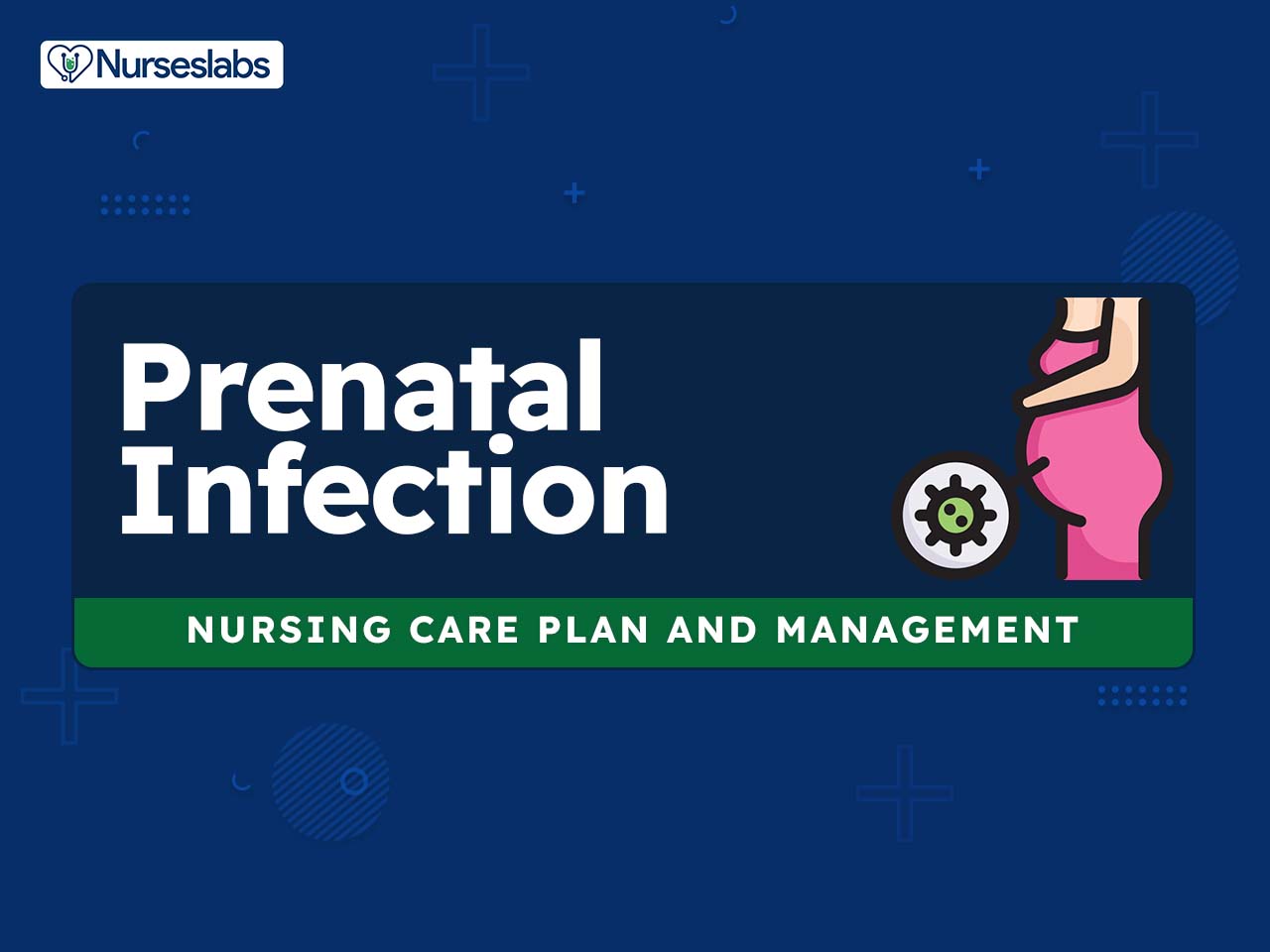


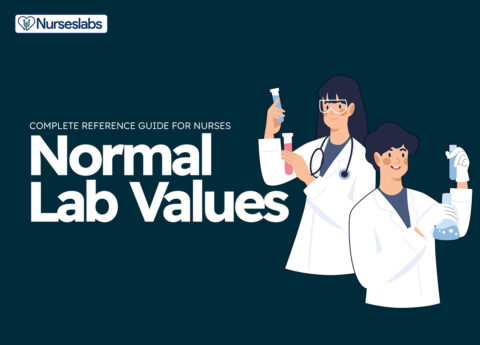

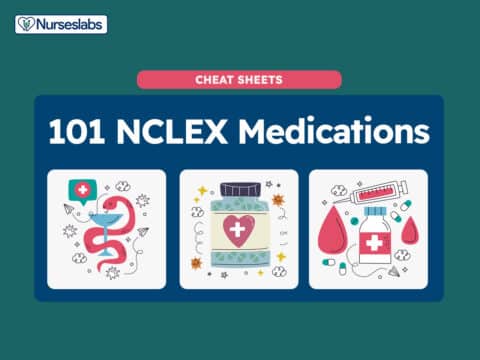



















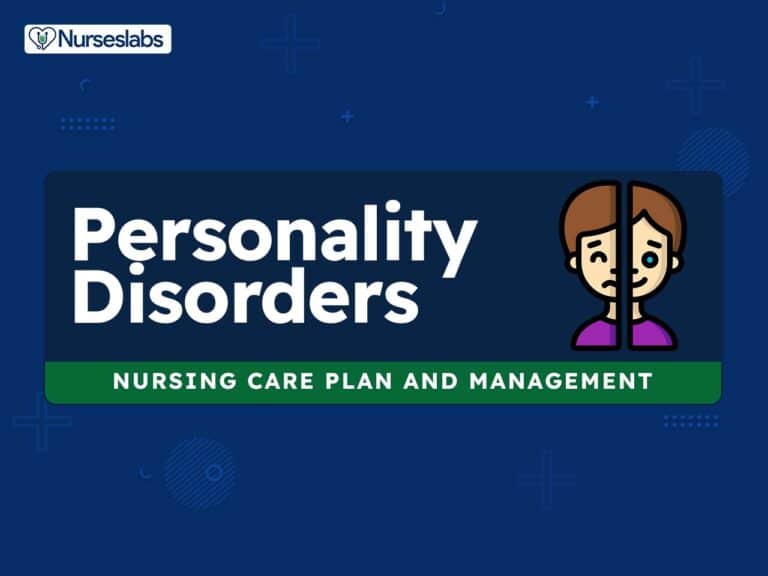
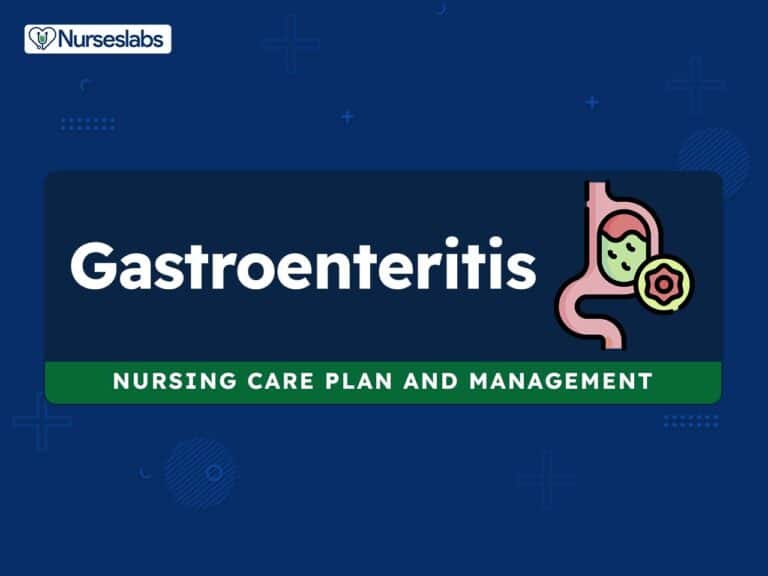
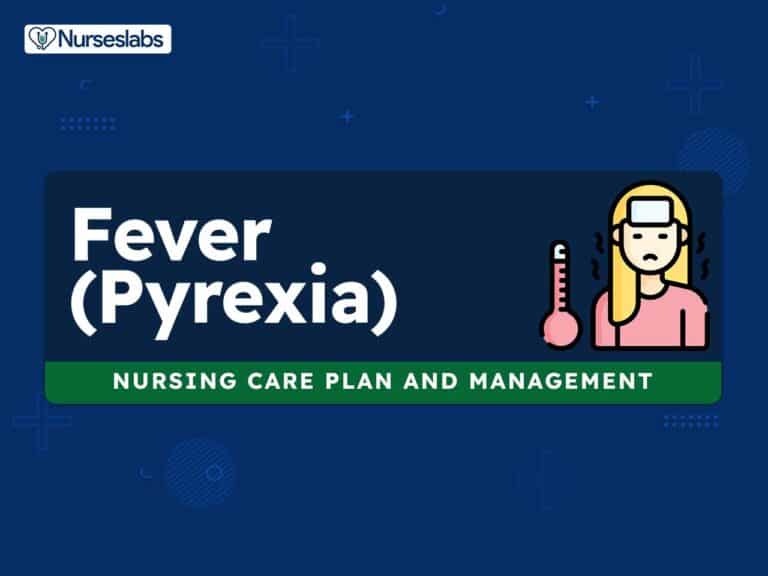
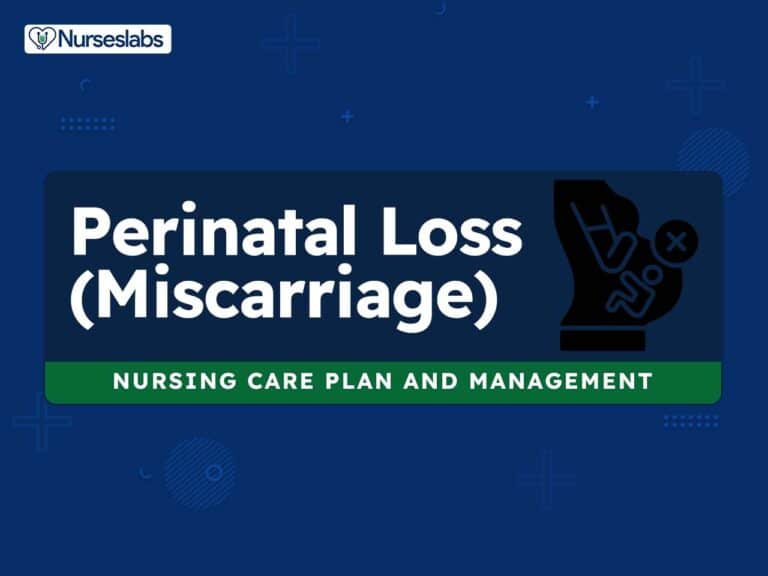

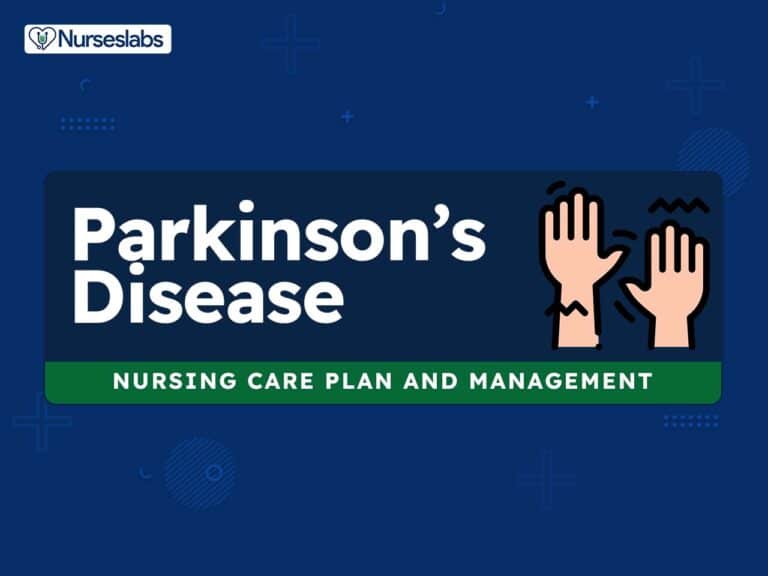
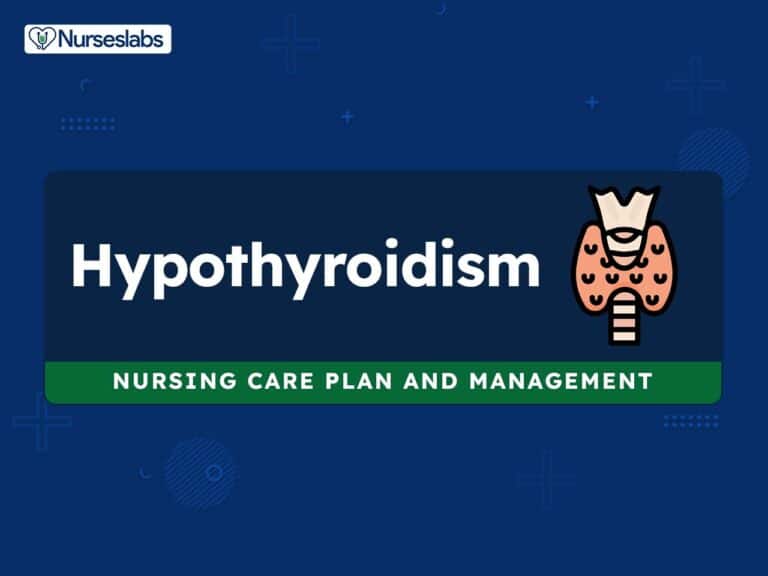

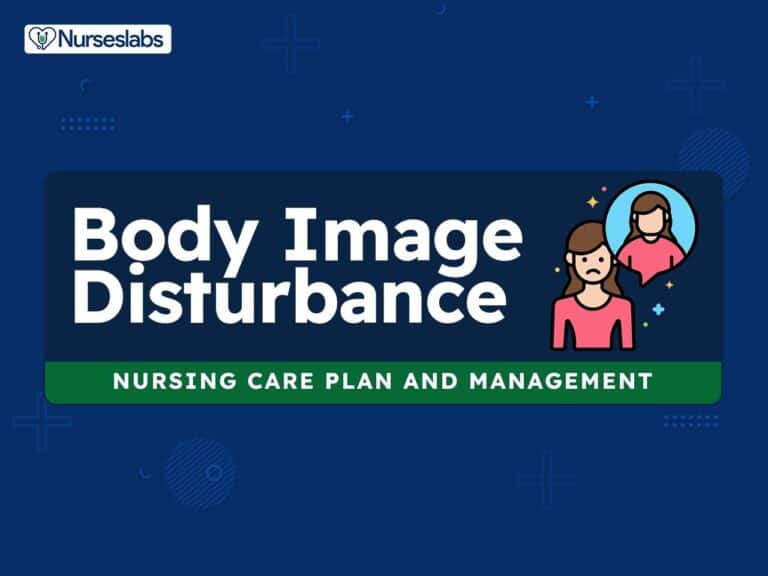
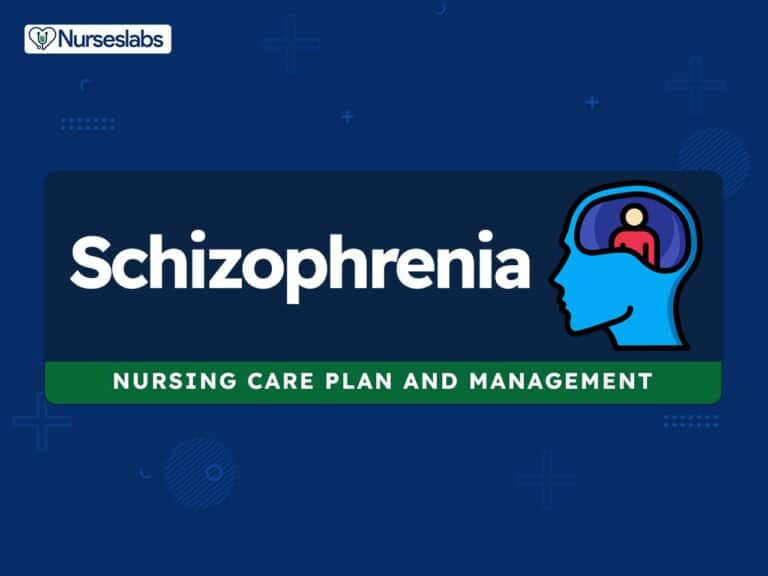
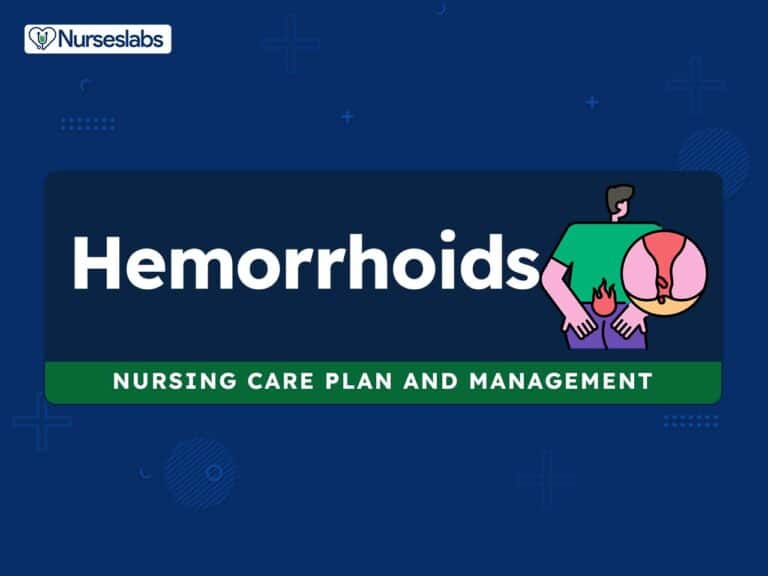
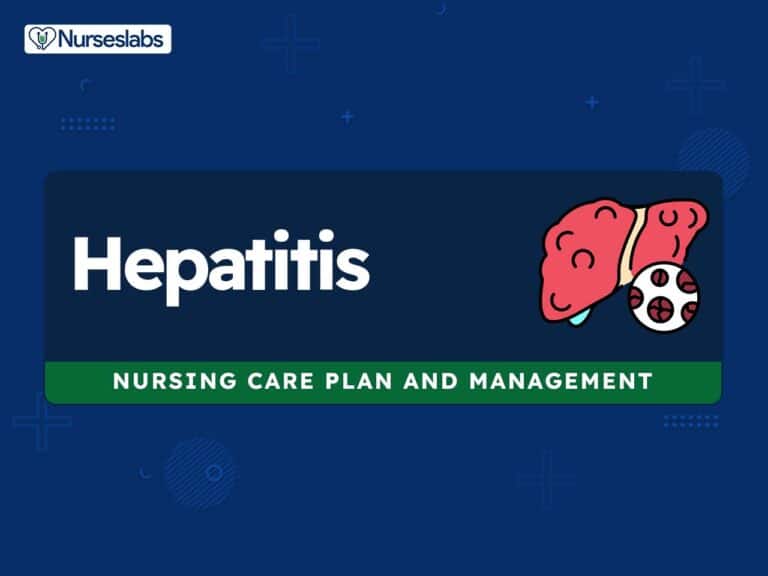
Leave a Comment